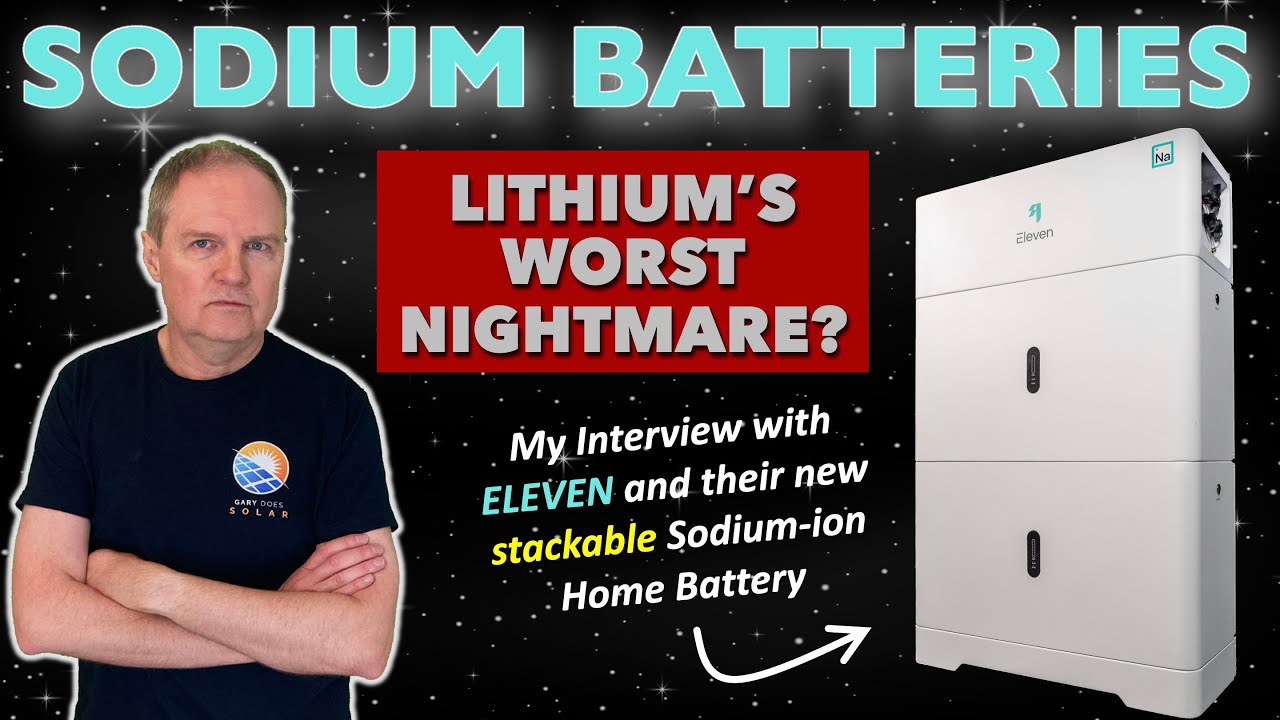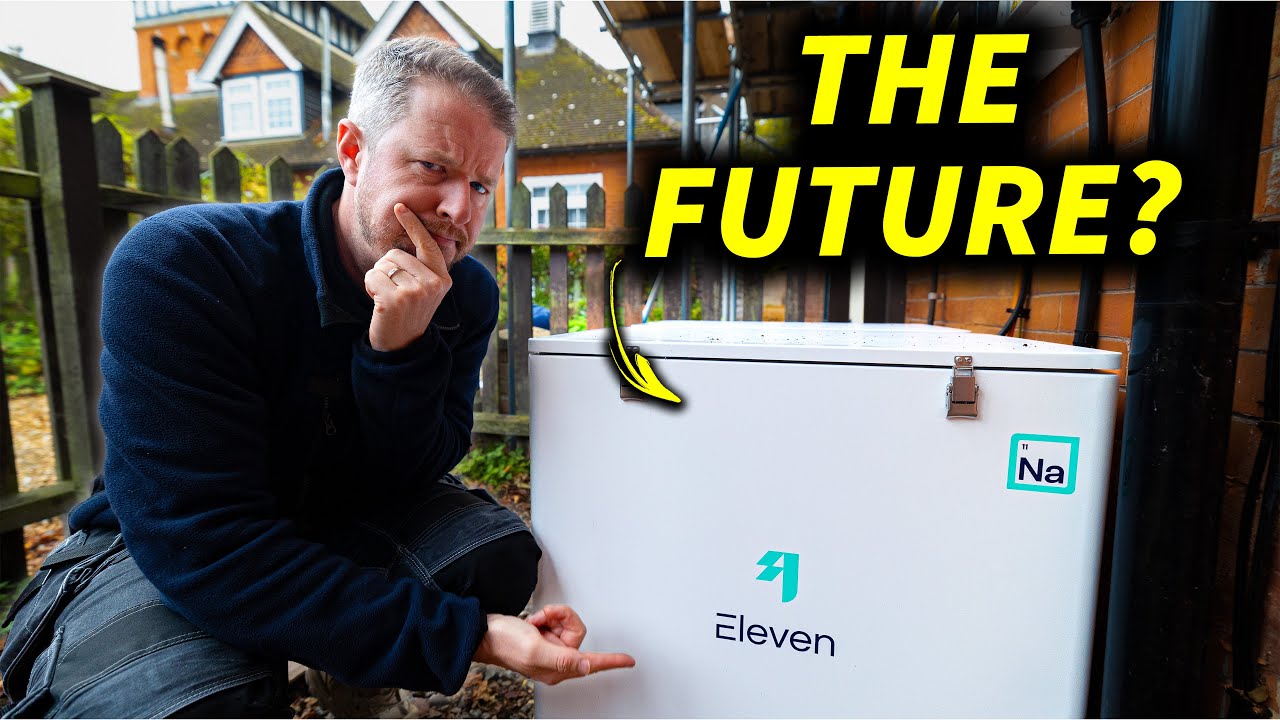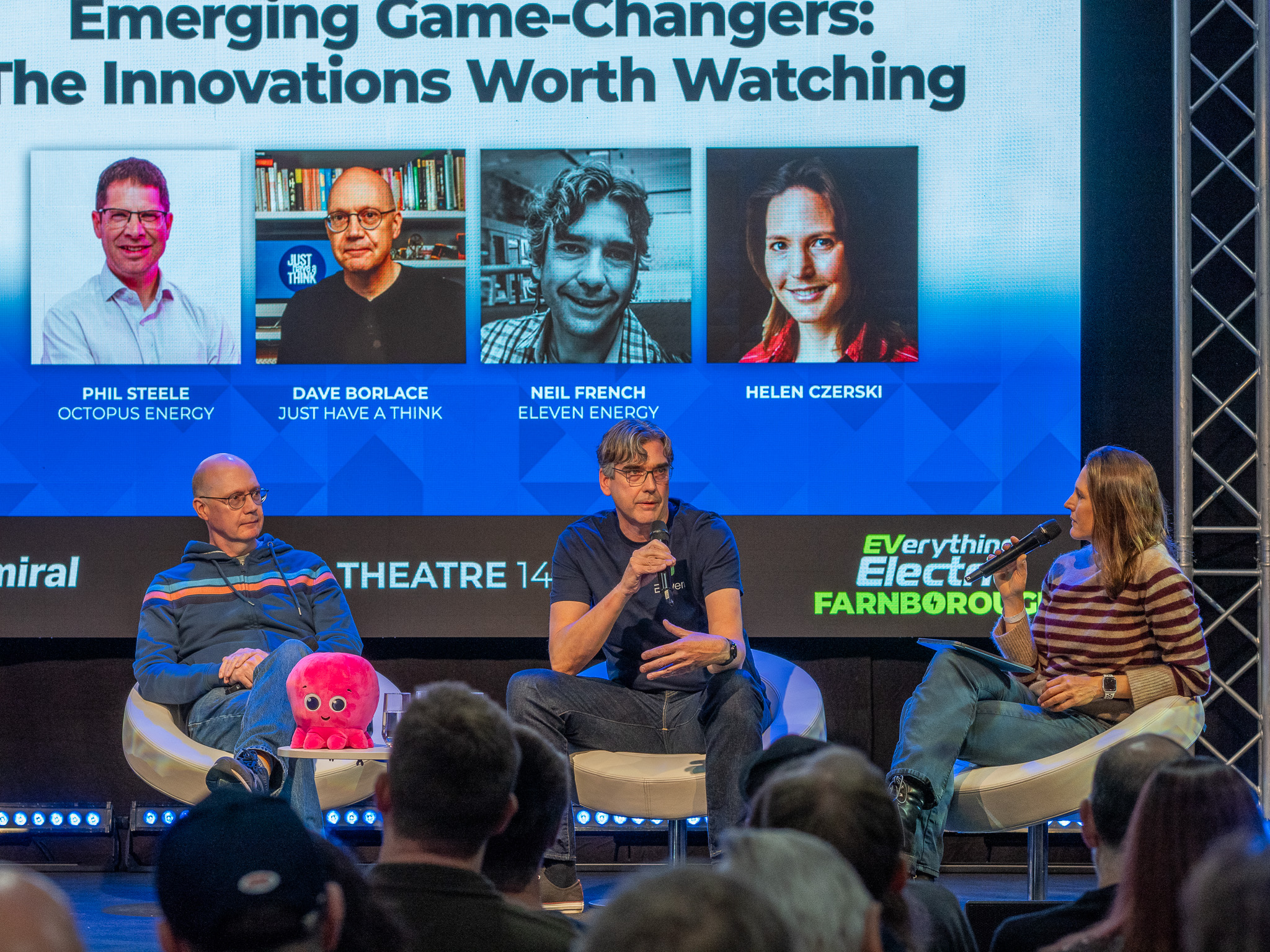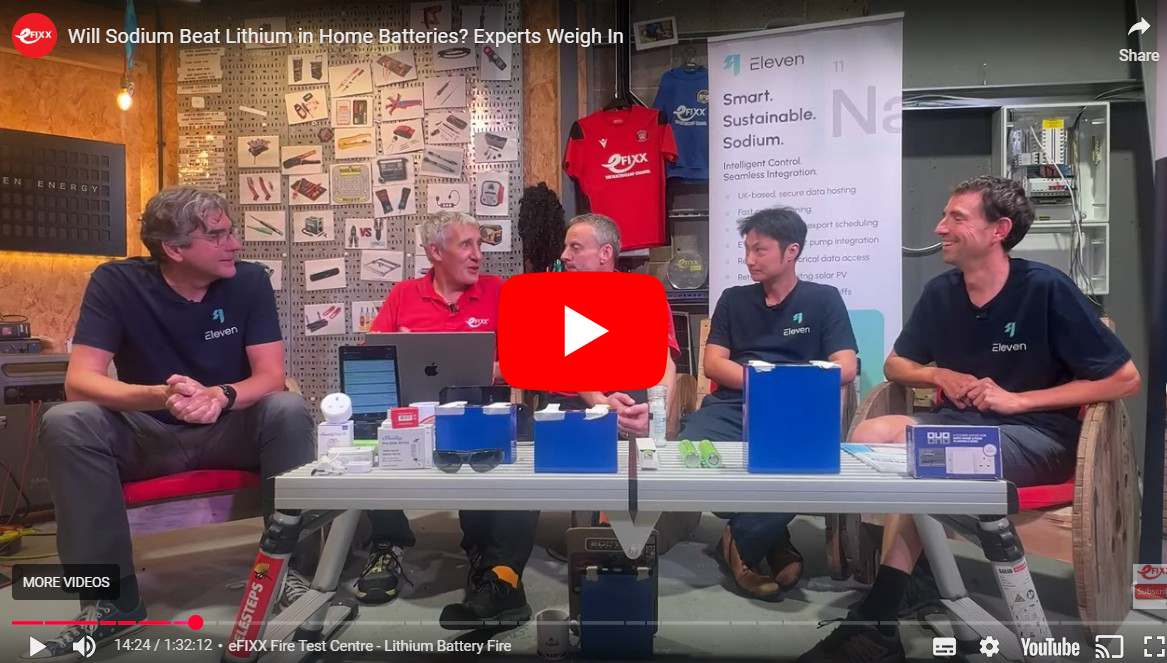Sodium-ion batteries have been making headlines in the energy world – but can they really compete with lithium in real homes?
To explore that question properly, we invited Gary Waite from the Gary Does Solar YouTube channel to our studio in Cambridge. Gary sat down with Andy Rankin and Neil French to discuss the technology behind sodium-ion, how it performs in UK conditions, and why Eleven has launched the UK’s first fully integrated sodium-ion home battery system.
You can watch the full interview here:
👉 https://www.youtube.com/watch?v=2KR1jaZ-uuQ
Why all the fuss about sodium-ion?
Most UK solar PV systems now include a battery so that homeowners can store daytime solar and use it in the evening instead of buying electricity from the grid. Until now, those batteries have almost always been lithium-ion – the same family of chemistries used in phones, laptops and EVs.
Lithium works well, but it has some challenges:
- Lithium is relatively scarce and concentrated in a few regions.
- Extraction can be water-intensive and environmentally damaging.
- Global demand from EVs is pushing supply chains hard.
Sodium is different. Chemically, it behaves very similarly to lithium in a battery, but it is:
- Abundant and widely available, including from common sea salt (sodium chloride).
- Based on materials like hard carbon, iron and phosphate that are also plentiful.
- Easier to source from more diverse and sustainable supply chains.
That means sodium-ion can deliver lithium-like performance while reducing environmental and resource pressures.
Cold-weather performance: built for UK winters
One of the big topics in the interview is how batteries behave in the cold.
Many homeowners are now required or advised to install batteries in garages or outdoors. For traditional lithium iron phosphate (LFP) systems, that can be a problem in winter:
- LFP batteries cannot be safely charged below 0 °C, so the BMS will simply refuse to charge.
- To get around this, systems often need internal heaters, which consume power and add complexity.
By contrast, Eleven’s sodium-ion batteries are designed to charge at –20 °C (at 0.2C). That means:
- Overnight charging on off-peak tariffs can still work reliably in a cold snap.
- There is no need for energy-hungry heaters just to get the system going.
- Capacity and round-trip efficiency remain much more stable across the seasons.
For UK homes with outdoor battery locations, this is a major real-world advantage.
Safety and cycle life
The interview also covers safety and longevity – two areas where sodium-ion performs strongly.
Key points from Andy and Neil:
- Sodium-ion cells avoid some of the dendrite formation and thermal runaway risks associated with certain lithium chemistries.
- Our system is backed by a 10-year product warranty with an 8,000-cycle guarantee.
- Both lab testing and field data from real installations show minimal detectable degradation so far.
Importantly, sodium-ion also has no depth-of-discharge penalty in normal use, so you can comfortably use the full battery capacity without worrying about harming the cells.
What about the downsides?
No technology is perfect, and Gary presses us on the trade-offs.
The main one is energy density:
- Sodium-ion batteries are typically around 15–20% larger than an equivalent LFP system for the same usable capacity.
In a car, that’s a big issue. On a wall outside your house, it’s far less critical.
There is also a wider voltage curve across the charge range, which means you cannot simply pair sodium-ion cells with any old inverter. That’s why Eleven has developed a complete, matched system – battery packs paired with inverters designed to handle the wider voltage range safely and efficiently.
Beyond hardware: smart home energy management
As Gary highlights in the video, a modern battery system is about far more than just the cells and the box they sit in.
Eleven’s solution includes an in-house home energy management system (HEMS) and app which:
- Integrate with Shelly sensors and switches to understand not just how much energy your home is using, but where it is being used.
- Work with EV chargers, heat pumps and other high-load devices to avoid draining the home battery unnecessarily.
- Connect to UK tariffs, including Octopus, to optimise charging and discharging against real-time or time-of-use prices.
- Use location and weather data to forecast solar generation and heating demand and adjust behaviour automatically.
- Provide a smoother experience for installers with guided commissioning and traffic-light checks, and a better handover for homeowners with clear next steps.
The goal is a system that you can largely “set and forget”, while the software continues to adapt to seasons, tariffs and usage patterns.
A British sodium-ion system – today and tomorrow
Right now, Eleven’s sodium-ion home battery system combines:
- Sodium-ion battery packs (with our second-generation, stackable design on the way),
- A range of single-phase hybrid inverters for different property sizes, and
- Our EMS and app tailored to UK homes and tariffs.
Looking ahead, Andy also talks about our ambition to bring sodium-ion cell manufacturing to the UK. We’re already in conversation with leading university research groups to explore pilot production and technology transfer.
We’re proud that Eleven is already delivering sodium-ion systems into British homes today – and even more excited about what comes next.
Watch the full interview
If you’d like to go deeper, hear the questions Gary asked, and see the hardware in our studio, watch the full video here:
👉 https://www.youtube.com/watch?v=2KR1jaZ-uuQ
And if you’re an installer or homeowner interested in how sodium-ion could work in your project, we’d love to hear from you.






